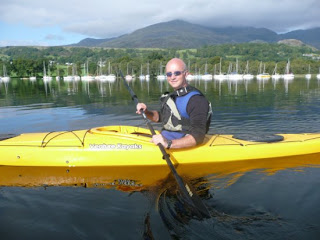Tides and sea conditons
The best place to leave from is the sandy south beach at Tenby, which has a good car park. There is a slipway of sorts across the sand but the tide goes out a long way so it can be a long carry. Sea conditions vary a lot, so it is important to check the forecast as well as the tides. Setting off from the south beach, it is just possible on a clear day to make out the landing on Priory beach.
The prevailing current sweeps towards this shore, so the outward trip is a fairly easy paddle, depending on the cross winds. There is a buoy at the half way mark which helps keep you on course and I usually stop at it for a rest.
Deserted Island
In the summer the Island is popular with tourists who pay £11 (just under $18 – a good reason to travel by kayak!) to make the crossing on boats from Tenby Harbour. Out of season, however, I have landed on the beautifully unspoilt Priory beach - without so much as a Cistercian monk in sight.
There is a bit of an unpredictable rip tide if the sea gets up and swirls around the island but that only adds to the enjoyment of this satisfying Pembrokeshire paddle.
 |
| On Prioriy Beach, Caldey Island |
( YouTube Video of a large group of Caldey Island kayakers )


